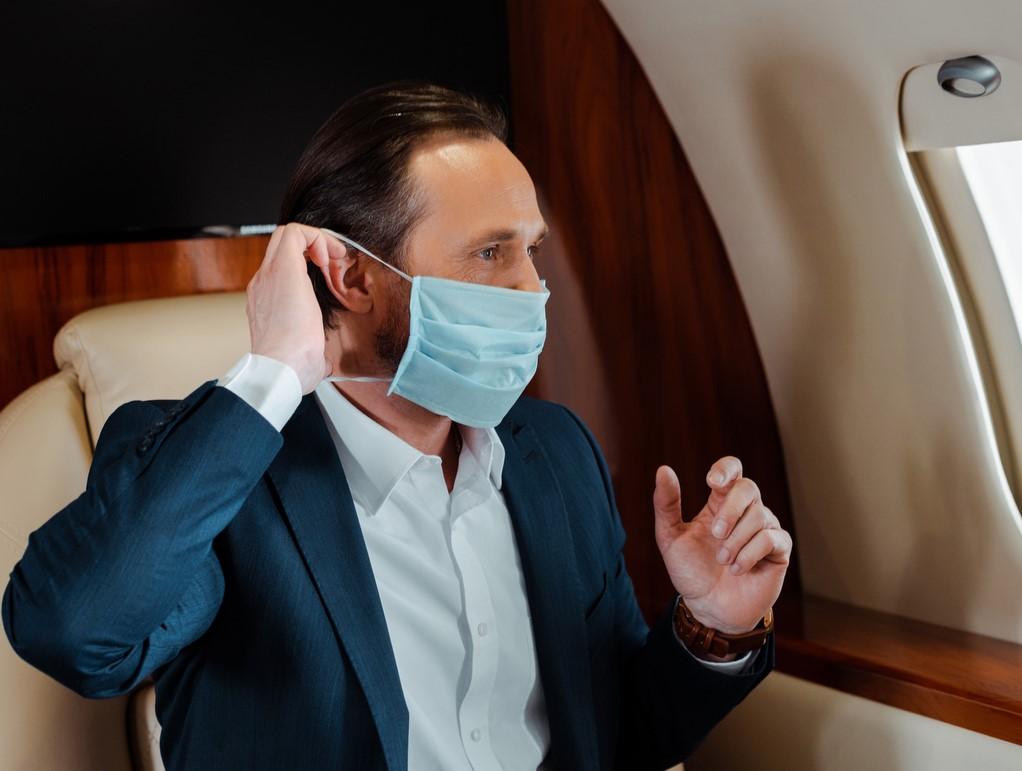Numerous companies are dropping requirements for facial coverings in the wake of yesterday's ruling by a federal judge in Florida that overturned the federal COVID-19 mask mandate on public transportation.
Facial coverings are no longer required on airplanes, trains, buses, and other public transit in the United States. The mandate had recently been extended through May 3.
US District Judge Kathryn Kimball Mizelle wrote in a decision that the Centers for Disease Control and Prevention (CDC) had exceeded its authority in issuing the mandate and failed to provide adequate rationale for its decision.
White House representatives said they were disappointed in the ruling, adding that the CDC still recommends wearing a well-fitted facial covering on public transportation.
Within hours of the decision, all major US airlines said masks were now optional for passengers, and ride-share companies Uber and Lyft also dropped mask policies for riders and drivers.
Meanwhile COVID-19 cases are ticking upward across the country as the BA.2 subvariant becomes more prevalent. The United States reported 54,009 new COVID-19 cases yesterday and 281 deaths, according to the Johns Hopkins COVID-19 tracker.
The 7-day average of new daily cases is 39,152, with 425 deaths, according to the New York Times tracker. The average represents a 43% increase over the past 2 weeks.
90% of kids hospitalized with Omicron not vaccinated
A CDC overview of hospitalizations among kids ages 5 to 11 posted today, including the first data on hospitalization in this age-group during the Omicron surge (Dec 19, 2021, through Feb 28, 2022), highlights the impact of the variant on young children and includes strong evidence in support of vaccination.
Despite being the only surge to occur after children in this age-group were eligible for vaccination, the Omicron period saw the highest hospitalization rates for kids—2.3 times higher than the Delta peak.
Among 397 children hospitalized during the Omicron surge, 2 in 10 required intensive care unit admission. Among those hospitalized, 9 out of 10 were unvaccinated, and 3 in 10 had no underlying medical condition.
"Non-Hispanic Black (Black) children accounted for the largest proportion of unvaccinated children (34%) and represented approximately one third of COVID-19–associated hospitalizations in this age group," the authors wrote.
"Children with diabetes and obesity were more likely to experience severe COVID-19. The potential for serious illness among children aged 5–11 years, including those with no underlying health conditions, highlights the importance of vaccination among this age group."
More than 33,000 child COVID-19 cases were reported for the week ending Apr 14, according to the latest update from the American Academy of Pediatrics.
In the United States, approximately 12.9 million children have been infected with COVID-19 since the start of the pandemic, 7.9 million of those since last September.
Promise for Moderna 2-strain booster
Also today, Moderna announced that its first bivalent (two-strain) booster candidate demonstrated superiority against Beta, Delta, and Omicron variants one month after administration, and showed continued superiority against Beta and Omicron for 6 months.
"The results indicate that mRNA-1273.211 at the 50 µg dose level induced higher antibody responses than the 50 µg mRNA-1273 booster, even when additional variants of concern were not included in the booster vaccine," said Stephane Bancel, MS, MBA, Moderna CEO.
"Our latest bivalent booster candidate, mRNA-1273.214, which combines the currently authorized Moderna COVID-19 booster with our Omicron-specific booster candidate, remains our lead candidate for the fall 2022 Northern Hemisphere booster."
Shanghai deaths rise amid brisk testing
In global news, as officials in China battling an outbreak of the quickly spreading Omicron variant in Shanghai, the country's largest city, cases outside of quarantine show signs of a slight drop as mass testing continues, according to Reuters.
Deaths, which often lag cases, are still low by international standards, but are rising. Today China reported seven deaths, all in Shanghai. Overall, China reported 21,484 new local cases, of which 18,187 were asymptomatic. Of the symptomatic cases, 93% were from Shanghai, and, of the asymptomatic cases, 95% were from Shanghai.
Elsewhere in Asia, cases in Taiwan—known for its strong COVID-19 response—continue to rise sharply, with 1,727 new cases reported today. Officials reported two deaths, including a 2-year-old child, marking Taiwan's first pediatric COVID-19 death of the pandemic, according to Focus Taiwan.
Meanwhile, as South Korea's cases decline to a 2-month low, officials yesterday eased most of the country's restrictions, according to Reuters. The exception is masking, which will be in effect for another 2 weeks while officials assess whether to relax those rules.
CIDRAP News Editor Lisa Schnirring contributed to this story.




















